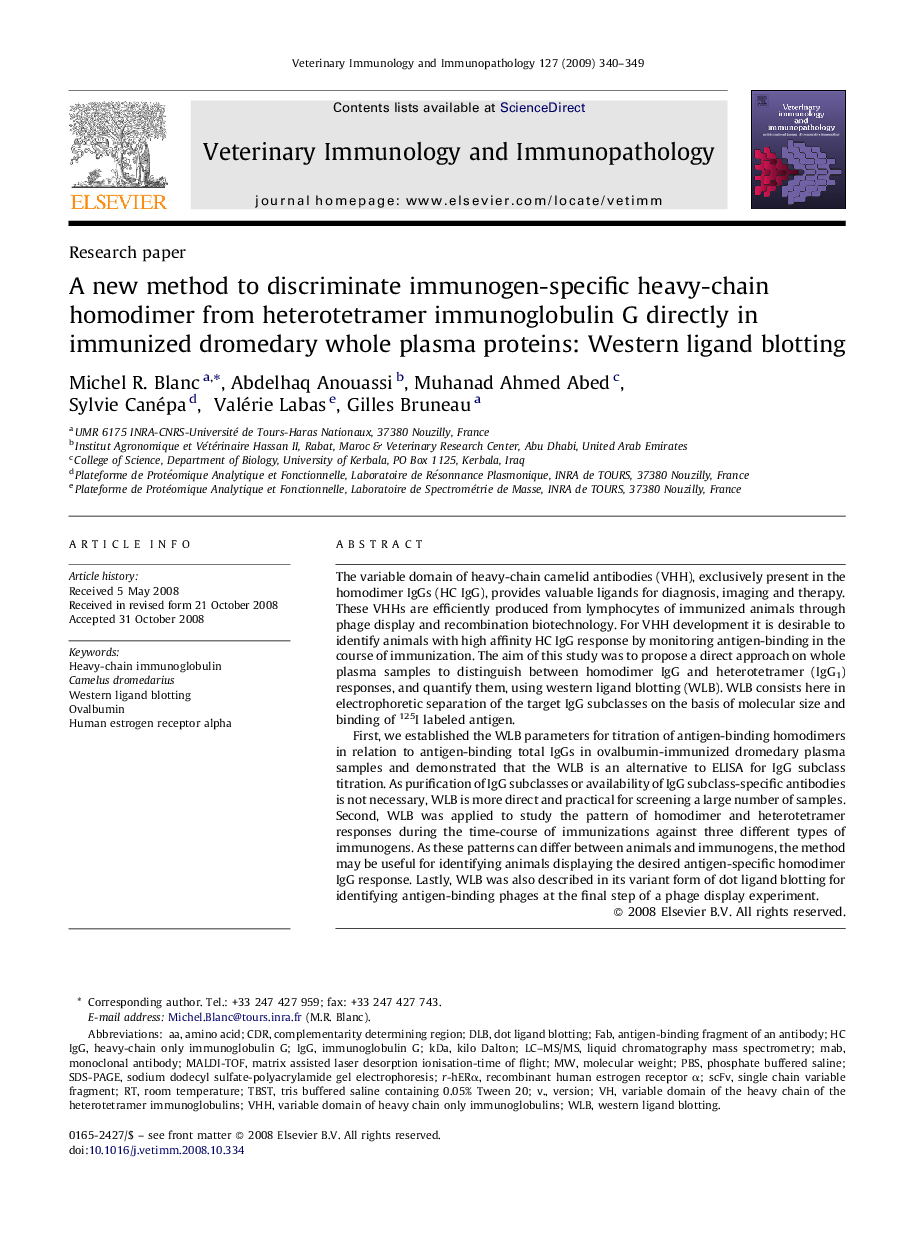| Article ID | Journal | Published Year | Pages | File Type |
|---|---|---|---|---|
| 2462746 | Veterinary Immunology and Immunopathology | 2009 | 10 Pages |
The variable domain of heavy-chain camelid antibodies (VHH), exclusively present in the homodimer IgGs (HC IgG), provides valuable ligands for diagnosis, imaging and therapy. These VHHs are efficiently produced from lymphocytes of immunized animals through phage display and recombination biotechnology. For VHH development it is desirable to identify animals with high affinity HC IgG response by monitoring antigen-binding in the course of immunization. The aim of this study was to propose a direct approach on whole plasma samples to distinguish between homodimer IgG and heterotetramer (IgG1) responses, and quantify them, using western ligand blotting (WLB). WLB consists here in electrophoretic separation of the target IgG subclasses on the basis of molecular size and binding of 125I labeled antigen.First, we established the WLB parameters for titration of antigen-binding homodimers in relation to antigen-binding total IgGs in ovalbumin-immunized dromedary plasma samples and demonstrated that the WLB is an alternative to ELISA for IgG subclass titration. As purification of IgG subclasses or availability of IgG subclass-specific antibodies is not necessary, WLB is more direct and practical for screening a large number of samples. Second, WLB was applied to study the pattern of homodimer and heterotetramer responses during the time-course of immunizations against three different types of immunogens. As these patterns can differ between animals and immunogens, the method may be useful for identifying animals displaying the desired antigen-specific homodimer IgG response. Lastly, WLB was also described in its variant form of dot ligand blotting for identifying antigen-binding phages at the final step of a phage display experiment.
